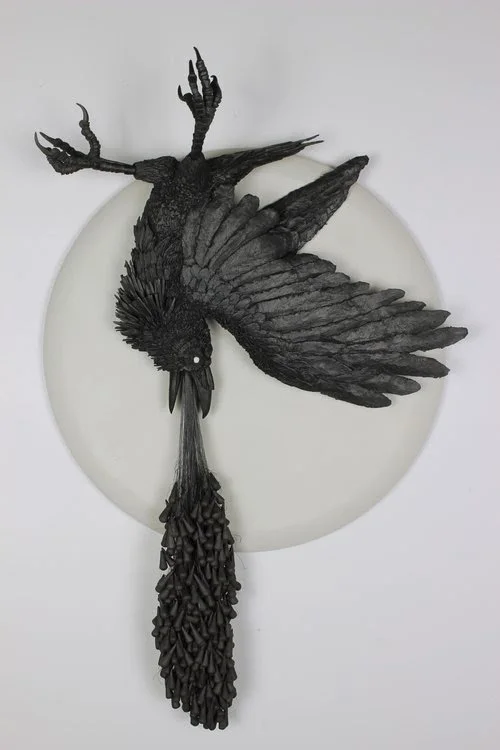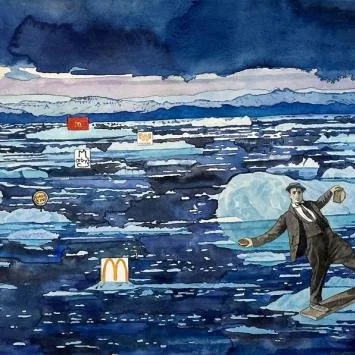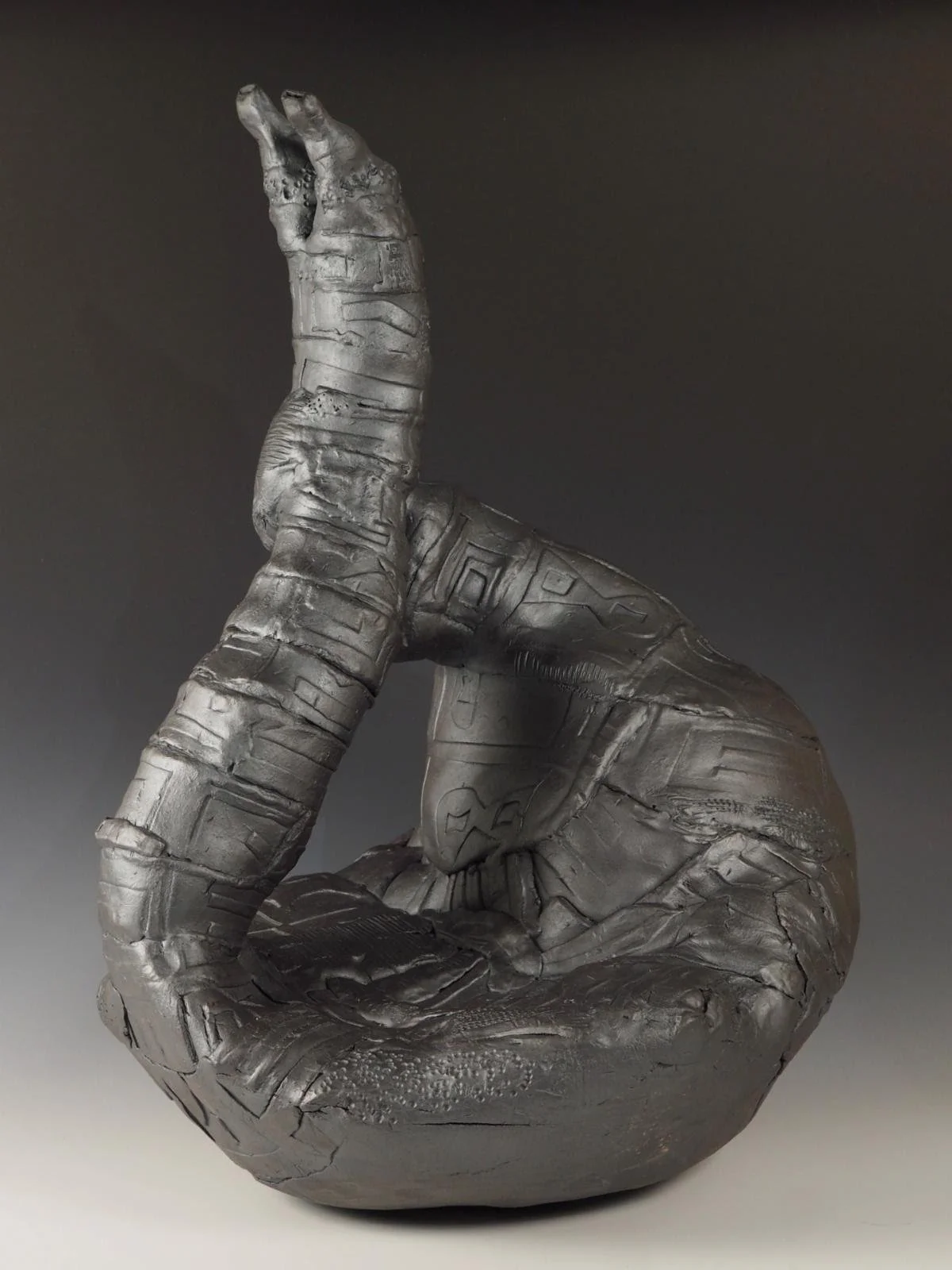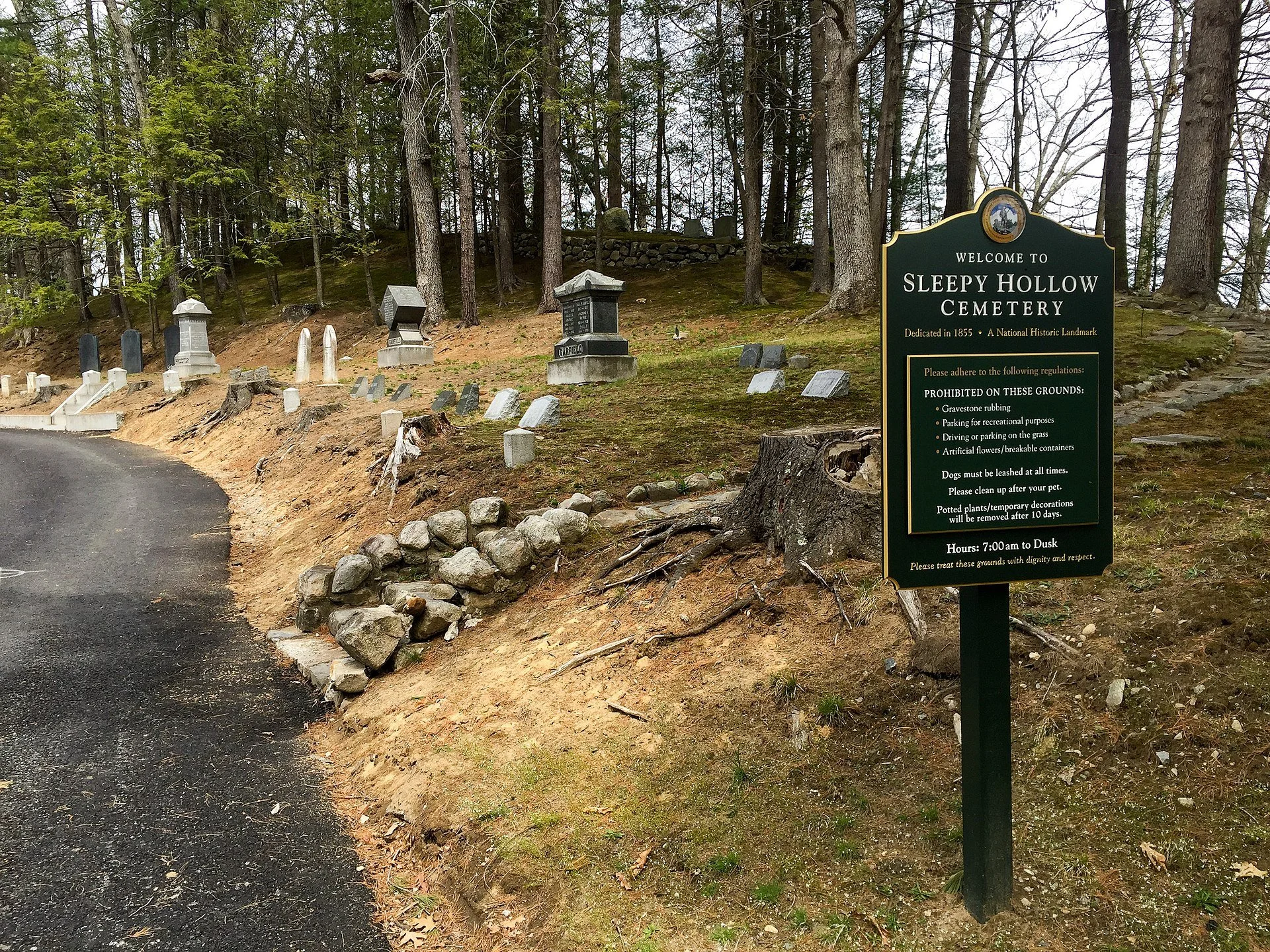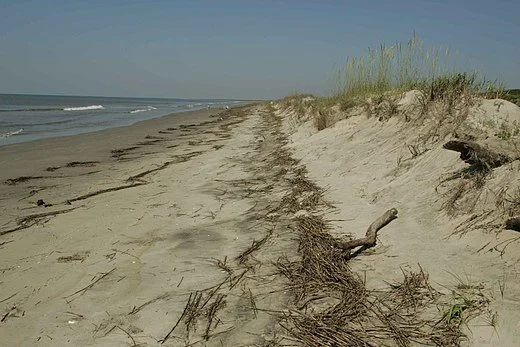
Insatiable
“So Empty” (stoneware, porcelain, underglaze, nichrome wire, braided nylon thread, wood, paint), by Attleboro, Mass-based ceramic artist Erica Lynn Hood, in the group show “Earthworks, Tradition, Innovation,’’ at the Umbrella Arts Center, Concord, Mass., through June 23.
— Image courtesy of The Umbrella Arts Center
The galley says the show celebrates "the depth of history, tradition, and cultural expression in contemporary ceramics" and how modern ceramicists continue to push the boundaries of the medium. The show is juried by Ayumi Horie, a Maine-based potter who was the recipient of the 2022 Maine Craft Artist Award from the Maine Craft Association. She says: "What makes this show worth experiencing is the breadth of aesthetics, approaches, and ways of seeing a material that is at once so common and so underseen.’’
Eat beef and melt
“Patty Melt” (watercolor), by Jane Goldman, in her show “Global Warming Series (2018-2023),’’ at Umbrella Arts Center, Concord, Mass., through May 5.
She explains:
“Global Warming Series (2018-2023)’’ is an ongoing series of watercolor monotypes on 22” x 30” Arches Hot Press watercolor paper. Dark humor sets the tone, inspired by silent-film comedians, especially the great Buster Keaton (above). In this context, the silent comedians represent all of us, experiencing global crises in slow motion. Like them, we watch the planet beset with catastrophe in ever faster motion.
“Some pieces in the series personalize the consequences of our behavior. The painting here depicts Keaton, burger in hand, amidst glacial melt, due in part to global beef consumption. Other works, such as ‘Clean Air Act,’ point out the obtuseness of ignoring our present reality. And in some works, such as ‘Teetering on the Edge,’ our Everyman is depicted in a situation right before catastrophe occurs, implying that there’s still time to alter the outcome.’’
‘Resolute optimism’ in face of climate threats
“Feeling the Heat” (thermal imaging art), by Adam Sebire, in the multimedia show “Points of Return,’’ at the Umbrella Arts Center, Concord, Mass., May 1-June 25.
The Umbrella Visual Arts program, in collaboration with A La Luz, is featuring the work of 27 international artists, in the first physical exhibition of the acclaimed online exhibition of the same name.
The arts center says:
“This environmental art exhibition has The Umbrella divided into themed spaces. A journey has been mapped out to give visitors fresh and engaging insights into wide-ranging aspects of the climate crisis, with its end destination that of resolute optimism. For while it may seem that we are racing toward a closing act, as our planet’s average temperature rises year-to-year, solutions remain within sight. We have not yet reached that dreaded ‘point of no return’ and artists can present scientific data in new ways. Through dynamic display and crossing several artistic disciplines, this show provides commentary, reflection, and creative restorative strategies.’’.
‘Landscapes’ in different media
Snakesound” (clay), by Liz Newell, in the group show “Earth, Sea & Sky,’’ at the Umbrella Arts Center, Concord, Mass., Jan. 8-Feb. 11.
— Photo courtesy artist.
The gallery says:
“‘Earth, Sea & Sky’ is a collection of artworks by Suzanne Hill, Liz Newell and Barbara Willis. Each artist approaches the theme of ‘landscapes’ through their own medium. Their unique interpretations of the world around us are woven in fabric or built from, clay, the very Earth itself. ‘‘
Sleepy Hollow Cemetery, in Concord, a Boston area town that was one of America’s most important cultural centers in the 19th Century. Many famous people are buried there, including Ralph Waldo Emerson, Nathaniel Hawthorne and Henry David Thoreau
— Photo by Kenneth C. Zirkel
‘Ever-evolving aggregate state’
“Shiver Me Timbers,’’ by Michael MacMahon, in his show “Wrack Line,’’ at the Umbrella Arts Center, Concord, Mass., through Oct. 31.
The gallery says:
“Wrack lines are linear piles of debris (both natural and manmade) that become situated on the edge of the landscape. The result of their coming in contact with and carried along by the forces of incoming waves and tides.
“The merging of economic need, curiosity, seen and unseen forces have brought peoples from different cultures and communities into contact across great distances. Whether through clashes or cooperative endeavors, these convergences have brought about the adaptation of living within a contemporary culture that is an ever-evolving aggregate state. Ideas of the self/home/the domestic space and the landscape come together in the paintings on view.’’
Debris in a wrack line
Homelessness and grapes in ConcordC
“She4She” (shadowboxes made of reclaimed wood, metal and plexiglass, acrylic paint), by Pauline Curtiss and Rose Leitner, in the show “She4She’’ in the Umbrella Arts Center, Concord, Mass., through Jan. 2
This installation was inspired by Heading Home, a homeless-serving agency that serves individuals and families. The gallery says the artists used the contrasting dark and bright colors of the installation to reflect the struggles and triumphs experienced of the women at Heading Home.
Since Concord is a rich Boston suburb you don’t often think of homelessness in connection with it.
Besides its fame as site of a battle that helped launch the Revolutionary War and a center of intellectual life in the mid-19th Century, Concord is also where In 1849 Ephraim Bull developed the Concord grape (beloved of grape-juice fans) at his home on Lexington Road, where the original vine still grows. Welch's, the first company to sell juice made from Concord grapes,, is headquartered in the town.
The Boston-born Bull developed the grape by experimenting with seeds from some of the local native species. On his farm, down the road from the the literary households of Ralph Waldo Emerson, Henry David Thoreau, Nathaniel Hawthorne and Alcott (as in Louisa May Alcott and the new movie version of Little Women), he planted some 22,000 seedlings before producing the ideal grape. But he never made much money from them.
In 1853, his grape won first place at a Boston Horticultural Society exhibition. It was introduced to the market in 1854. The Rev. Thomas Bramwell Welch developed the first Concord grape juice in 1869. Through pasteurization, the juice did not ferment into wine. That was important to him because he opposed drinking alcoholic beverages, including at the Holy Communion table.
Concord grapes
